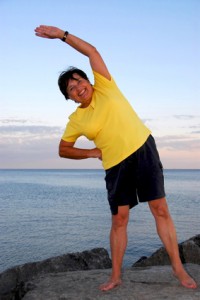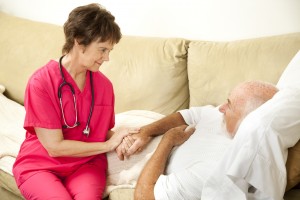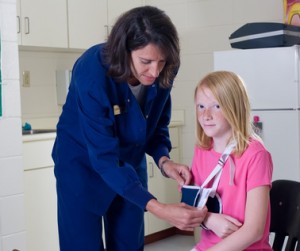
momcilog - iStock
Physician, heal thyself — and nurse, get thyself fit.
It’s one of the paradoxes of the health care field that often the very people who are dispensing valuable advice about fitness have a hard time following it, themselves. According to several studies, more than half of all nurses are obese, and more than 10% smoke. Many nurses feel they are too busy to take care of themselves, tending to help others first.
Why is there this disconnect between the clinical knowledge about how to be healthier, and actually putting that into practice? How can nurses successfully reach their wellness goals?
One thing they can do is look to the behavior-change concepts they use with patients, such as the Stages of Change and the Health Action Process Approach, according to this article on Nurse.com.
Behavior change science is still evolving, but nurses who are involved in wellness and behavior change say that the first step toward health is often finding a strong motivation to change.
It’s also important to set realistic goals, going inch by inch rather than trying to do everything at once (and getting discouraged when that doesn’t work). One nurse in the article started by just walking a mile or two around the neighborhood regularly. Another made sure she built breaks into her schedule — for every 50 minutes of work, she would take 10 minutes to get up to walk around and stretch. She not only made gains in her health but was more energetic and productive when she went back to work.
Planning for change and possible barriers also is important, said Karen Gabel Speroni, RN, BSN, PhD, MHSA, director of nursing research at Inova Loudoun Hospital in Leesburg, Va., and co-creator of a research program called Nurses Living Fit. She suggests nurses start any self-care plan by documenting their lifestyle practices — what they eat, how much water they drink, how much sleep they get — and use that information to work in small changes.
Darlene Trandel, RN, PhD, FNP, PCC, an International Coach Federation-certified professional health coach and consultant for health, wellness, lifestyle and chronic care, has worked with many nurses to create environments to help them succeed. This may mean keeping sweets out of the house, planning an activity program or finding a satisfying substitute for a cigarette. She also helps them plan for things that might sabotage their good intentions, such as treats in the break room or feeling too tired to exercise after work.
Start small, finish big
After nearly a year of neighborhood walking, Cotter’s friend suggested they walk the 2011 Oklahoma City Memorial Marathon. Cotter said she thought she could do the 13.1 mile half-marathon, so they began to increase their walking times and distances, got up early nearly every day, trained with a running group and entered short races.
Although she wasn’t dieting, Cotter started decreasing portion sizes and increasing fruits and vegetables. She didn’t lose weight at first, but she dropped a dress size and began feeling better. People started telling her she looked better, too.
The half-marathon was a success, and the friends agreed they would try for the full marathon in 2012. They finished the 26.2 mile race in 6 hours, 46 minutes. By the start of the April 29 marathon, Cotter had lost 50 pounds and six dress sizes. She was off all but one medication, including the blood pressure medications she’d assumed she would take for the rest of her life. In January, three months before the marathon, Cotter made a resolution to give up fast food, a vow she has kept “with three small lapses,” she said.
Worth the effort
Creating and sustaining a healthy lifestyle is not easy, said nurses who work in behavior change, and the process almost always involves setbacks. Tracking progress, enlisting the support of others and changing strategies to avoid boredom can help people continue with healthy changes. “Don’t hate yourself for doing behaviors that are not what you wanted,” Speroni said. “Forgive yourself and move on.” Support from friends, family and colleagues through the entire change process is crucial, Melnyk said.
There are professional reasons for nurses to take care of themselves, said Speroni, whose report, “Effect of ‘Nurses Living Fit’ Exercise and Nutrition Intervention on Body Mass Index in Nurses,” cites a recent study that concludes patients may not have as much confidence in the wellness advice of nurses who do not appear to have followed it themselves. “Weight-appropriate nurses had more public confidence in their teaching,” her report states.
Nurses who strive for a healthier lifestyle can provide inspiration for their patients to change, Harrington said. They can acknowledge that change is difficult, but also show it can be done. “Health isn’t a goal, health is who we are,” she said. Making healthy changes provides “an opportunity to be excellent role models, educators and advocates.”
Cotter said her new motivation is to be a model for others. When she teaches her students about the need to take care of themselves now, she is passionate. She brings in photos from her marathons and uses her own experiences as an example. She still has some back pain and wants to lose 25 more pounds, but she feels like she can do it. The most important lesson of her wellness journey, she said, was “figuring out that you just make time. Taking the time is hard, but eventually the benefits are worth it.”










